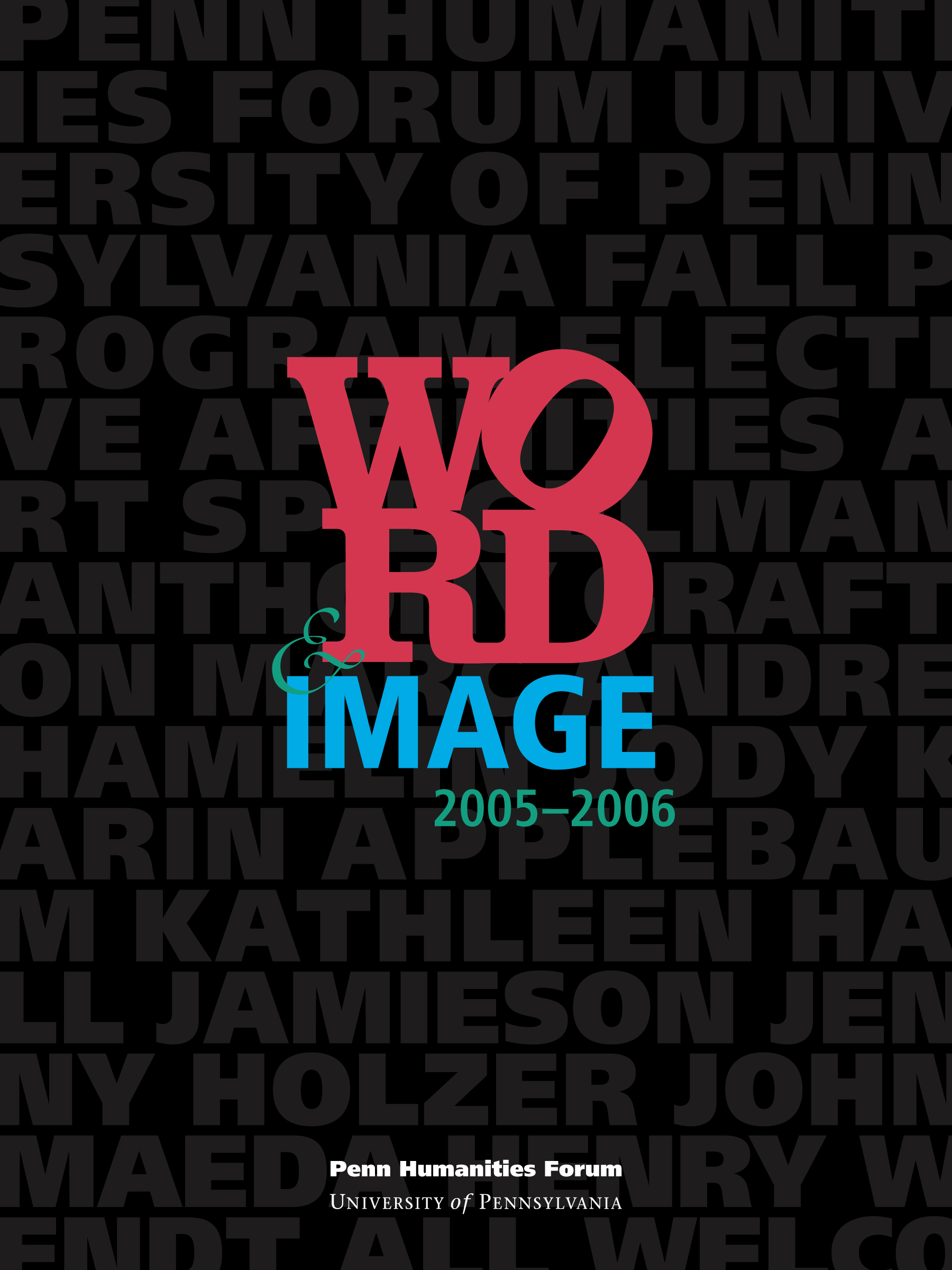Topic Directors:
Catriona MacLeod, Associate Professor, German
Liliane Weissberg, Christopher H. Browne Distinguished Professor in the Arts and Sciences, Professor of German and Comparative Literature, and Graduate Chair, Germanic Languages and Literatures
"Mixed media" culture has changed from a novelty to the norm in our day. University disciplines struggle to justify their borders. Small children outperform their media-challenged parents. The Internet, films, television, advertising, video games, and high-art hybrids (installations, performance art) demand an ever-increasing ability to decode interactions between words and images.
Under the circumstances, this would seem an opportune moment to investigate the word-and-image relation. First, we must recognize that it has a past. Indeed, the connection between the verbal and visual has been fundamental to the history of several humanistic disciplines. We might revisit the ancient yet pressing debate about the respective abilities of words and images to represent. From the Renaissance “paragone” or competition among the rival arts, to the eighteenth-century “sister arts,” to Romantic ideals of synthesis and recombination, the word-image relationship has been a continuous theme of literary and art historical thought.
How words and images represent and whether they enjoy a harmonious kinship, engage in border skirmishes, or seek to annihilate one another, are not merely formal matters. The history of iconoclasm alone tells us about the ideological stakes in the debate. The emotion and loyalties involved in the process of memorialization— notably, after the World Trade Center disaster—seem to demand multi-media expression. And the word-image opposition is linked to other strongly ideological binaries: masculinity versus femininity, time versus space, abstraction versus materiality, art versus nature.
Our inquiry must also encompass new technologies for meshing words and images. For example, the verbal “crawler” at the bottom of the television screen occupies the same visual field as the visual footage of an entirely different news story. Here broadcast news demands that we make simultaneous sense of discontinuous media. The new information resources available via the Internet and in software applications present us with constantly mutating layerings of words and pictures. Do such media images act as supplements or “illustrations” to words, or vice versa? What relation lies between word and image, what are its claims, and how does it insert itself into our consciousness?
Much contemporary art explicitly refuses traditional classification and explores intersections between media: for example, land art, installation art, video art, or (a recently coined term) “word-and-image art.” In current literature, to cite only one example, the fiction of W. G. Sebald has attracted critical attention for its interweaving of narrative and photography. Our current preoccupation with hybrid forms could helpfully be historicized: what do they have in common with the illuminated manuscript, the emblem book, the cartoon, the comic strip, or film? How has the visual entered literary genres, how have words and texts changed the way we view and “read” art—historically, or in the present?
With this broad view in mind, the Penn Humanities Forum invites your participation!
Home
2005—2006



